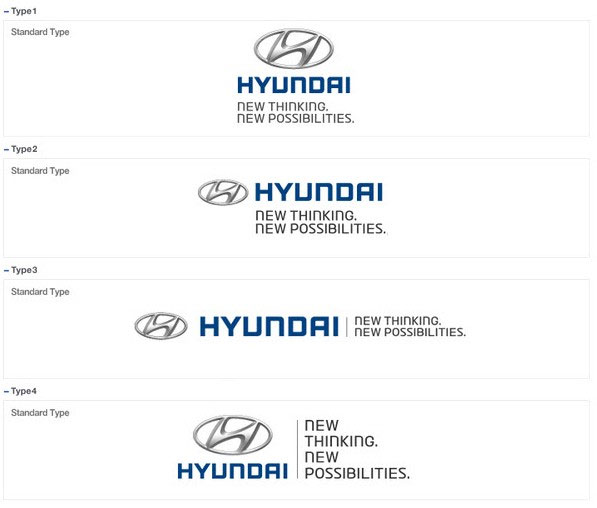In my career I’ve had the opportunity to work with countless global brands, provided counsel and written many brand guidelines. Yet, I’ve encountered many organizations that fail to recognize the importance of creating brand standards—or they simply fail to implement and manage them correctly.
Keeping consistency with your brand voice and messaging is critical to brand continuity as your organization grows. These guidelines don’t need to be expansive, but should include a basic set of guidelines. Here are the most important rules to consider:
Positioning statement
Brand guidelines traditionally cover all aspects of how your brand should be represented—but this isn’t limited to only visuals.
If your brand has a solid positioning or value statement (as it should), rules should be established for how this is used and in what scenarios. Often, positioning statements are distilled from key pillars of your brand, and those pillars become talking points that keep messaging consistent, particularly when speaking with media or relevant audiences.
These pillars and positioning statement typically become distilled down into a singular—shorthand message known as your tagline or slogan. The tagline is an integral part of your brand guidelines and rules should be created for its use.
Logo usage
The single most important and recognizable asset of your brand is your logo, and its consistent use and application is vital to maintaining brand continuity. When creating a set of rules for your logo consider the following:
Orientation and shapes: The shape of your logo should have some flexibility and options that provide rules for any application. For example, if your brand contains an icon or graphic element with supporting text that’s primarily horizontal, also create a vertical or ‘stacked’ version of the logo that can be applied when space is more limited, or if your primary brand signature appears too small in the space allowed.
The following example shows how Hyundai provides multiple signature and tagline configurations to allow for different applications:
TIP: Don’t create rules that lock you into rigid or inflexible applications
Color palette
Colors set the tone and personality of your brand, and walking through your local Home Depot tool aisle shows how brands use color as a key signature for their identity:
The use of color in your brand is one of the most important considerations and should not be taken lightly. Colors are a key personality trait and resonate differently with different groups of people. The idea of color theory goes back decades in human psychology and many brands do a considerable amount of research when creating their palette.
You’ll notice in corporate America there’s a lot of common colors across industries, and this is not coincidental. Many industries have similarities in their use of color, not because of copying the competition, but because certain colors represent characteristics and values brands wish to communicate. For example, in the automotive industry many brands use the color blue because blue has historically represented trust, honesty and stability. Another example might be the pharmaceutical industry where colors like light blues, greens, and pastels are used because those colors communicate dependability, growth, and wisdom.
Businesses in various industries adopt similar colors because these are well-established design cues that resonate with their customers and prospects.
Don’t underestimate the importance of color and the power it can wield for your own brand.
Typography
Font usage tends to be one of the biggest rules broken in today’s brand marketing. It’s not something that happens intentionally, but rather it’s a byproduct of the differences between legitimate design software and Microsoft Office.
Agencies or designers who create marketing materials and brand assets will have much greater access to fonts than someone internally who might be charged with creating Word or PowerPoint templates. The problem is that many internal corporate systems will only have fonts that are native to Microsoft Office, and purchasing custom fonts for your entire enterprise can be costly and difficult.
This means, brand designers need to take into consideration font substitutions that are not only readily available, but can easily complement brand typography guidelines in a way that doesn’t create a burden on anyone creating assets internally.
Photography and imagery
Photos and icons are the pictures that help tell the story of your brand. But just like all other design elements, images come in a variety of different styles.
With the availability of countless sources for royalty-free images these days, many companies rely on these photos for most of their design and digital marketing materials. While it’s perfectly okay to use these types of assets, they do come with certain tradeoffs many might not consider.
Free means free for everyone – The upside of using royalty-free images is that there’s no cost, the downside is that everyone can use the exact same image—even your competitors. If you have a highly unique or creative campaign designed around your unique selling point, using a free stock image that anyone can use immediately dilutes the value of your creative.
Not enough choice – Sometimes communicating a specific concept or idea takes the right image, and trying to find specifics in free stock images can be nearly impossible. Since most stock photographers will shoot images with the broadest appeal, finding the exact composition to match your marketing concept can be a fruitless effort.
Resolution challenges – If your campaign includes printed materials, finding free stock images with high enough resolution for print quality can be difficult. Many free sources only have images suitable for web and digital use.
Consistency in style – A big part of brand continuity is also reflected in the images you choose to represent your brand. If you’ve defined a specific style (e.g., candid, black & white, abstract concepts, etc.), finding enough images in the same style can be the most difficult task.
While these challenges might make stock images more difficult to work with, there are other alternatives. Stock resources that offer paid plans will have a greater variety and quality of images to choose from. Many offer reasonable monthly plans that include a number of images per month, or even pay-per-image options that are fairly reasonable.
Remember that imagery is a critical component to all brand guidelines and specific styles should be represented to make sure the visual tone of your brand is maintained.
Create a gatekeeper
Many organizations refer to this as the ‘brand police’—and for good reason. This is the person (or department) responsible for making sure every piece of communication stays on-brand.
For larger companies or those with an international footprint, it’s impossible to stay on top of all the marketing needs around the world, and in many cases, materials are sometimes created quickly and internally. This can become standard practice and can quickly get out of hand if there’s no internal review process or policies.
Someone has to have the final say-so for all customer-facing materials to ensure your brand investment—and messaging doesn’t become eroded over time.
Make it flexible
Brand guidelines are a living document and should never be so rigid they don’t allow for flexibility or growth.
Creating rules for applications requires a certain balance. Defining all of the basic rules for your logo, tagline, colors, and typography should create a baseline that’s easy to understand and adopt. Also, showing real-world examples of collateral or other applications can go a long way in communicating how rules should be applied.
However, keep in mind that you will never anticipate every scenario or application your branding will encounter, so the rules you establish should have enough flexibility that allows them to adapt to as many situations as possible.
Fostering adoption of the rules drives success
Rules mean nothing if no one follows them. The most important part of any new brand introduction or rollout is gaining the support from your internal team, and this means getting people on board as soon as possible.
If you’re in the process of a brand update, internal communications should start early. Getting people involved in the process creates advocates who become ambassadors for the new brand once it’s launched.
Consistency builds strength
The overarching purpose of any brand guidelines to is maintain consistency of your brand voice. There’s nothing that will kill a brand quicker than creating confusion in the marketplace or in the minds of your customers.
The strength of every brand lies in its ability to present consistency across all media, and that isn’t possible without a clearly defined set of rules that are easy to understand—and even easier to follow.








0 Comments